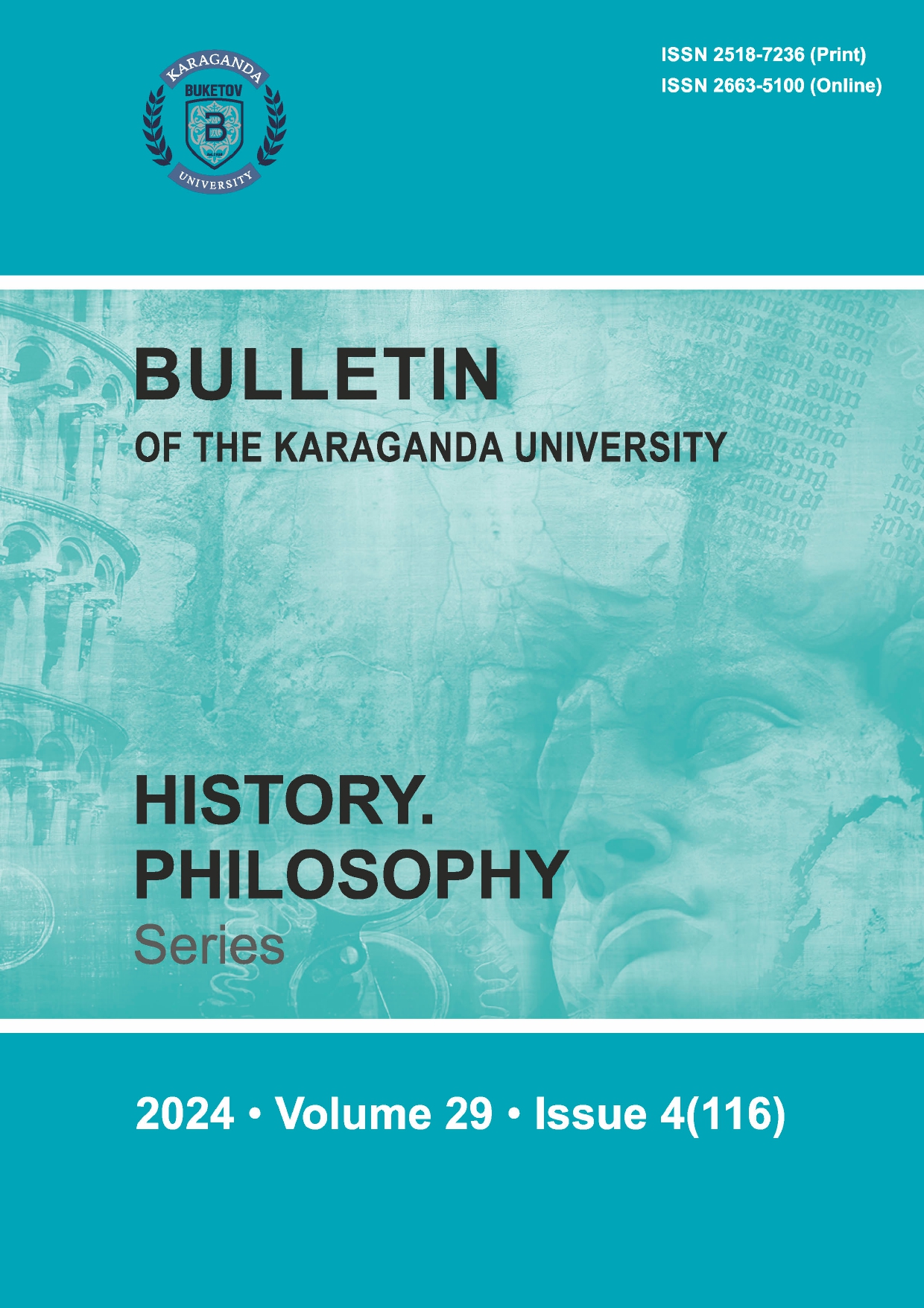Saryarka in the system of economic and ethnocultural relations of the early nomads of the southern Trans–Urals
DOI:
https://doi.org/10.31489/2024hph4/174-185Keywords:
Southern Trans–Urals, Saryarka, Ural–Aral cultural and historical region, early nomads, economic connectionsAbstract
In the early Saka and Sauromatian–Sarmatian times, the population of the modern Kustanai region, including Turgai, was part of the Trans–Ural horde of the ethnopothesteric association of the early nomads of the Southern Urals. The natural landscape features of the steppes of Central Eurasia determined the boundaries of the association. The Southern Trans–Urals, which include modern Kustanai and Turgai, are the eastern subregions of the vast Ural–Aral cultural and historical region. The nomads of this subregion bordered the nomadic tribes of Saryarka in the east, which is an independent cultural and historical region. The proximity of the populations of two cultural and historical regions contributed to the establishment and maintenance of various kinds of contacts between them. The need for copper and tin in the Trans–Ural steppes determined the economic and ethnocultural ties of the nomads of the Southern Trans–Urals and Saryarka. We can divide these connections into two periods: Early Saka (the VIII — the first half of the VI century BC) and Sauromato–Sarmatian (the second half of the VI — mid of the II century BC). The early Saka period had the closest connections, as evidenced by the proximity of material culture objects and the chemical composition of non–ferrous metals. In the Sauromatian–Sarmatian period, the intensity of connections sharply decreased due to changes in the ethno–political situation in the steppes of Central Eurasia. The needs of the nomads of the Southern Trans–Urals for copper and products made from it are now satisfied by the products of the Itkul center of metallurgy and metalworking. The supply routes for tin are also evolving, with Central Asian sources joining the previously established Altai sources.




